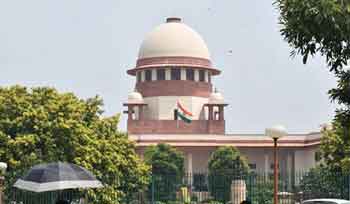Author
Dr Antriksh Srivastava
Surgeon and Assistant professor
Delve deep into the world of hernias with our comprehensive guide. Learn about different types of hernias, identify symptoms early on, and understand the associated risks to stay a step ahead in safeguarding your health
What is Hernia – What Are the Risks of Hernia?
Introduction
In our collective endeavor to understand the intricacies of various health conditions, today we delve deep into unraveling the mystery surrounding hernias. Hernias are a prevalent health issue that affects millions around the globe. This guide aims to shed light on the critical aspects of hernias, including the identification of symptoms and understanding the associated risks.
[ez-toc]
Understanding What a Hernia Is
A hernia occurs when an internal organ pushes through a weak spot in a surrounding muscle or tissue wall. The most common types of hernias are inguinal (inner groin), incisional (resulting from an incision), femoral (outer groin), umbilical (belly button), and hiatal (upper stomach). Understanding the different types is the first step in gaining comprehensive knowledge about hernias.
Inguinal Hernia
The most prevalent form, accounting for about 70% of all hernia cases, occurs mainly in men due to a natural weakness in this area.
Incisional Hernia
Often following abdominal surgery, this type manifests at the site of the previous surgical incision, where the tissue is weakened.
Umbilical Hernia
Predominantly seen in infants and obese individuals, it involves a small portion of the intestine protruding through the abdominal wall.
Hiatal Hernia
This variant involves the stomach pushing up into the chest cavity through an opening in the diaphragm, often linked to GERD and acid reflux issues.
Identifying the Symptoms
Identifying hernia symptoms early on can prevent complications. Common signs include a noticeable bulge, pain, or discomfort in the affected area, weakness, or a feeling of heaviness in the abdomen. Specific symptoms can vary based on the hernia type, thus demanding a detailed understanding of each to identify them correctly.
Understanding the Associated Risks
Recognizing the potential risks associated with hernias is vital. We explore the different hazards linked to various hernia types:
Chronic Pain
Persistent pain can be a debilitating outcome of untreated hernias, affecting daily activities and quality of life.
Strangulation
A severe condition where the blood supply to the herniated organ is cut off, leading to life-threatening situations if not addressed promptly.
Obstruction
This involves the intestine being trapped in the abdominal wall, causing severe pain and potentially leading to bowel obstruction.
Preventive Measures and Treatment
We advocate for a proactive approach to health by understanding the preventive measures one can undertake to mitigate the risk of developing a hernia. Regular physical activity, maintaining a healthy weight, and avoiding straining during bowel movements are pivotal in preventing hernias.
When it comes to treatment, surgeries such as hernioplasty and herniorrhaphy are the most common interventions. It is essential to consult with a specialist to identify the best course of action for your specific condition.
Hernioplasty
Involves the placement of a synthetic mesh to support the weakened area, aiming to prevent recurrence.
Herniorrhaphy
A surgical intervention where the herniated tissue is returned to its original place, and the weakened area is stitched to strengthen it.
Please Note: Before reaching any decision, please get your disease properly examined and also get yourself treated on the advice of a specialist. _
Conclusion
As we conclude our extensive guide on hernias, we reiterate the necessity to approach a healthcare provider for personalized advice and treatment. We have strived to offer a comprehensive overview of hernias and their associated risks, hoping to empower our readers with knowledge to make informed decisions regarding their health.
Remember, the best defense against hernias is awareness and timely medical intervention. Stay informed and prioritize your well-being.
About The Author
Dr Antriksh SrivastavaDr Antriksh Srivastava , Surgeon and Assistant professor – : Dr Antriksh Srivastava served in Delhi state cancer institute GTB hospital new delhi, after this he worked in Jag pravesh chandra hospital new delhi and currently he is assistant professor at Allahabad medical college and Mirzapur medical college.
Contact – :
Mobile – : +91 – 9971502063
Email – : drantrikshasrivastava@gmail.com













